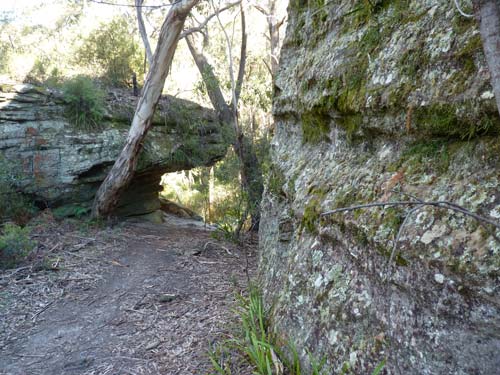<--- back
A farmer named William Cox, who arrived in Sydney in 1800 as a soldier, offered to build the road across the mountains. He had already built roads in the settlement. In July 1814 Governor Macquarie placed Cox in charge of building the road.
Thirty convicts were carefully chosen to build the road. Eight soldiers guarded the convicts and also protected them from Aboriginal attack. Building the road was hard and dangerous. The strong winds added to the dangers of cutting down the trees and the hard timber blunted the axes. Removing the tree roots was also difficult and tiring. The large rocks that could not be moved out of the way by block and tackle were cleared by explosives. Stone and timber bridges were built along the road. Conditions for the convicts were hard. Within a month, their shoes needed mending. Tents were not provided for them, so they had to find their own shelter. Rain often wet their blankets. They complained of colds, sprained ankles and splinters in arms and legs.

Even with all these difficulties, William Cox found that many of the convicts enjoyed their work. He praised them for the standard of their work and rewarded them with extra rations. The road down the western side of the mountains was also difficult to build. Time was spent looking for another way down, but none was found. It took one month to build the road. Governor Macquarie later named this steep road Cox's Pass.
Once across the mountains, the road was continued to the Bathurst area. It was completed in January 1815, in just over six months, and was over 163 kilometres long. The road was between 3.6 metres and 4.8 metres wide. Two carts could pass each other easily. Trees and bushes along the road were cleared back about 6 metres. Tree stumps were removed up to 3.6 metres from the road, and holes were filled.



